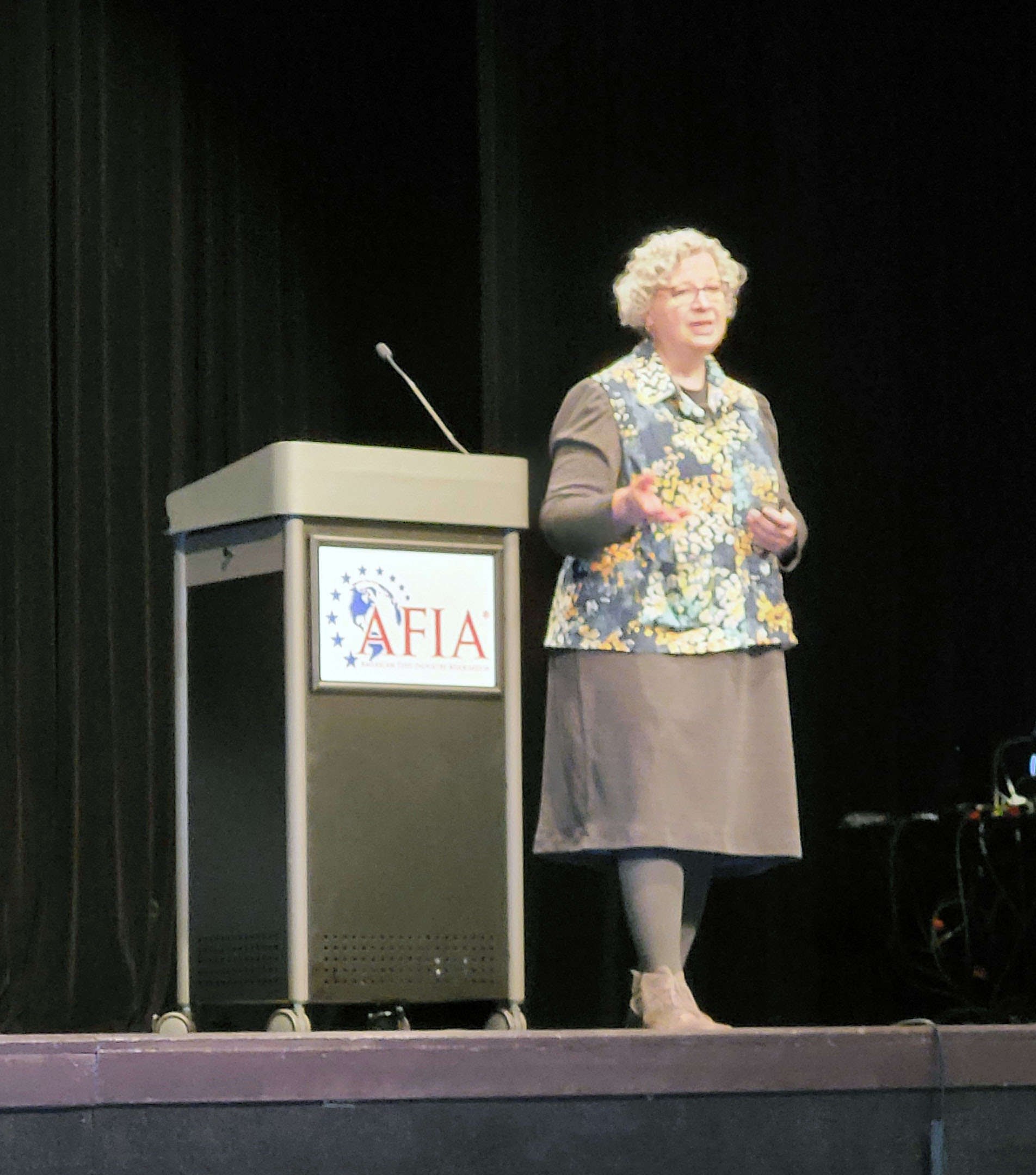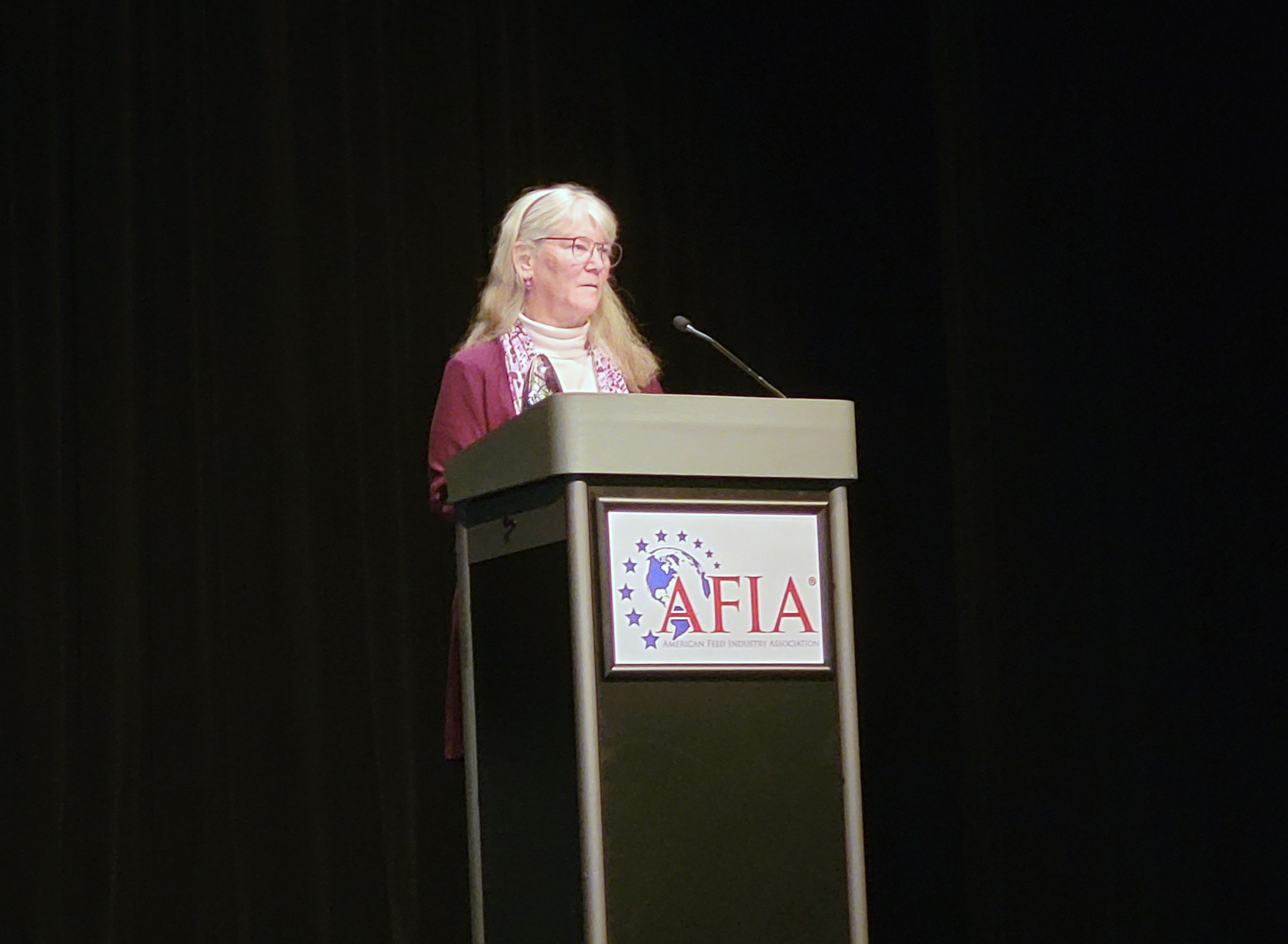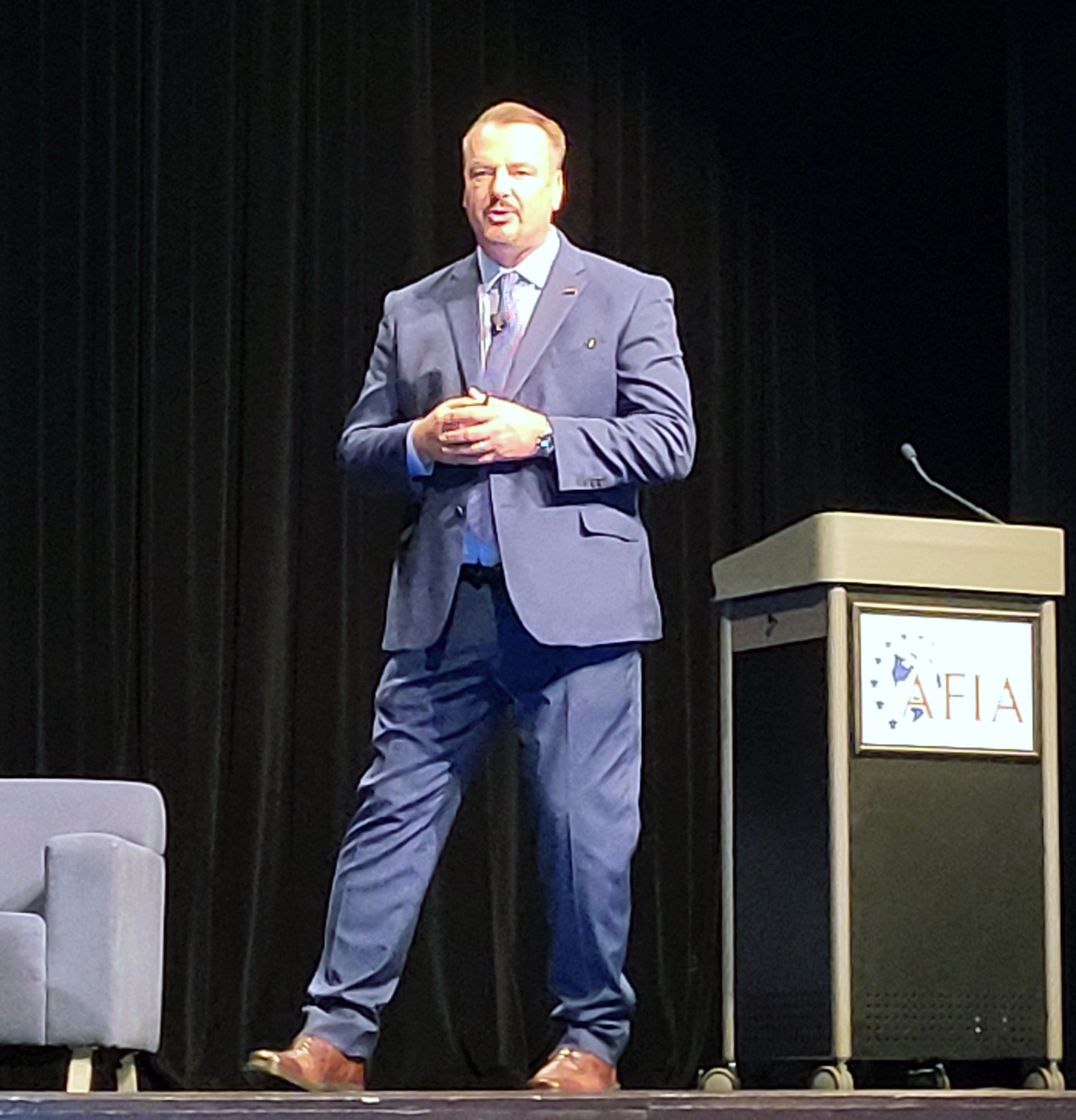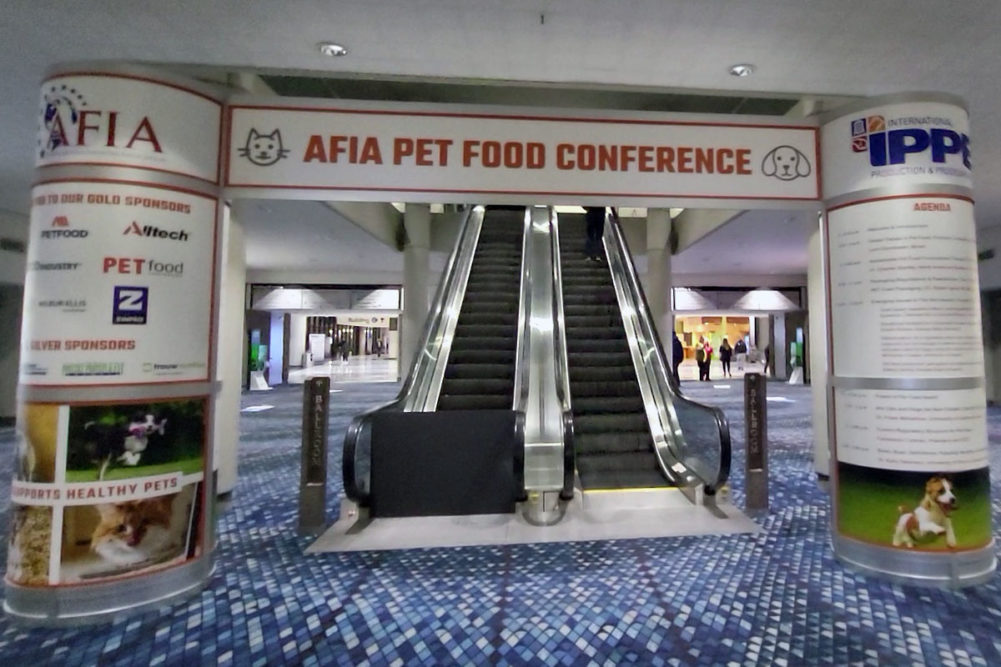ATLANTA — About 400 pet food industry professionals gathered at the American Feed Industry Association’s (AFIA) annual Pet Food Conference, held Jan. 30 in conjunction with the International Production & Processing Expo (IPPE) in Atlanta. This year’s conference was held in an expanded space, demonstrating the testament of a rapidly growing pet food and treat industry.
From 7 a.m. to 4 p.m., the conference was packed with critical information for pet food processors — from the latest trends and sustainability topics to timely research, trade updates and more.
Emerging trends
Beginning the conference, Lynn Dornblaser, director of innovation and insight at Mintel, took a deep dive into the emerging trends in pet nutrition — personalization, naturalization and sustainability. Dornblaser first provided a brief overview of the rapidly growing industry, revealing that about one-third of new product launches in the pet food space during the past five years came from new brands and new companies. The number of new product launches is significantly higher than those in the human food space, which are mostly focused on reformulations or new packaging.
With pet health meaning different things for pet parents, formula personalization is making its way to the forefront of the industry. One of the biggest trends in this space focuses on pet obesity. With pet weight issues rampant throughout the globe, many pet parents are seeking some type of personalized weight management formulas. Additionally, the popularity of pet DNA testing is on the rise, and that testing may pave the way for pet foods based on a pet’s specific DNA.

Lynn Dornblaser, director of innovation and insight at Mintel.
| Source: Sosland Publishing Co. / Nicole KerwinIn the naturalization area, Dornblaser shared an increasing number of consumers are seeking nutritional products with more natural claims, such as additive- or preservative-free. This also aligns with the increasing demand for refrigerated/frozen pet foods. Although refrigerated and frozen accounted for just 1% of new product launches globally, these formats are the epitome of natural for consumers. With this in mind, Dornblaser said she anticipates the refrigerated/frozen pet food category is set for significant growth.
Sustainability remains important to pet parents and, therefore, for pet food companies. However, the infamous practice of greenwashing has caused consumers to become mistrustful of brands touting their eco-friendliness. According to Dornblaser, brands must back-up their sustainability claims on packaging with data and explanations.
Additionally, regenerative agriculture continues to flourish throughout the human food industry, but isn’t nearly as prevalent in pet food. Dornblaser said she expects this will change, as trends in human food usually trickle down into pet, and that there will emerge a future focus on decreasing water usage in production.
Rendering, packaging and research
Charles Starkey, Ph.D., vice president of scientific and regulatory affairs of the North American Renderers Associatoin (NARA), took the stage to highlight the important role the rendering industry plays in pet food. Dubbed the “original recyclers” by Starkey, renderers offer pet food processors opportunities to enhance sustainability.
With consumers becoming more aware of their environmental impact, many pet food companies have re-examined their packaging to help advance their overall environmental initiatives. However, creating eco-friendly packaging that protects the product while also meeting consumers demands can be quite challenging, especially considering evolving sustainable packaging regulations.

Rafael Auras, Ph.D., professor at the School of Packaging at Michigan State University.
| Source: Sosland Publishing Co. / Nicole KerwinRafael Auras, Ph.D., professor at the School of Packaging at Michigan State University (MSU), addressed this topic in his presentation at the Pet Food Conference. He revealed the true impacts of some packaging that consumers commonly believe to be more eco-friendly, and highlighted the importance of collaboration. According to Auras, future partnerships between academia (such as MSU’s School of Packaging), pet food companies and governmental agencies are crucial in order to develop truly eco-friendly packaging.
Following these presentations, several students presented their research, hitting home on important topics within pet food formulation.
- Vanessa De La Guardia-Hidrogo of the University of Illinois Urbana-Champaign shared her research on yeast-based ingredients and their effect on microbiota fermentation within a dog’s gastrointestinal system.
- Elaheh Rabiee of Kansas State University provided a consumer analysis on the inclusion of sorghum in North American pet foods.
- Michelina Crosbie of the University of Guelph discussed her work in trying to determine protein quality in pet foods using the indicator amino acid oxidation technique. According to Crosbie, the research showed an improvement in overall oxidation response, but it’s not enough to fully determine protein quality.
- Katelyn Bailey of Kansas State University ended the session with a dive into her analysis of pet food producers’ perceptions of sorghum as a potential ingredient.
2024 Friend of Pet Food Award
In the afternoon, the AFIA announced its 2024 Friend of Pet Food Award winner. The annual award aims to recognize an industry member for their significant contributions to the pet food and treat industry. Jerry May, vice president of government and trade affairs at Freshpet, presented the award to Angele Thompson, Ph.D., founder and president of Thompson PetTech.

Angele Thompson, Ph.D., founder and president of Thompson PetTech.
| Source: Sosland Publishing Co. / Nicole Kerwin“I am very lucky to have gotten into the pet food industry at the beginning of my career and continue to contribute to the lives of pets and those who love them,” she said.
Busting myths
Continuing on the topic of sustainability, Frank Mitloehner, Ph.D., director of the CLEAR Center at the University of California, Davis, spoke on the true environmental impact of the overall agricultural industry, including the pet nutrition industry.

Frank Mitloehner, Ph.D., director of the CLEAR Center at the University of California, Davis.
| Source: Sosland Publishing Co. / Nicole KerwinWith the basis of pet food relying on proteins from the agricultural industry, it’s estimated that 163 million pets account for 25% to 30% of the total environmental impact of meat consumption in the United States, according to Mitloehner. The cattle industry in particular has received a negative rap for the supposed significant amount of methane emissions it emits. However, as demonstrated by Mitloehner’s presentation, global total methane emissions hover around 558 million tons annually, while total sinks — natural environments that absorb methane from the atmosphere — that eat those emissions up hover around 548 million tons, meaning that around 10 million tons remain — not nearly as high as what’s believed.
Though emissions like methane may not be as high, the need remains for the global agricultural industry to reduce its mark on the environment. The best way for this? Ensuring high efficiency in animal agriculture. According to Mitloehner, regions throughout the world are witnessing growth in animal production, but this production is less efficient compared to that in the United States and more developed countries. To help address this, Mitloehner said that the industry should focus on increasing animal productivity and animal welfare, as these methods can help animals produce more (meat, milk, etc.) with fewer inputs. This could help reduce emissions by 30%, and also help pet food processors reduce their impact throughout the supply chain.
Trade updates
Constance Cullman, president and chief executive officer of the AFIA, was joined by Alexis Taylor, US Department of Agriculture (USDA) undersecretary for trade and foreign agricultural affairs, and Ambassador Doug McKalip, chief agricultural negotiator for the Office of the United States Trade Representative (USTR), in a trade panel.
According to these representatives, US pet food and agriculture exports will continue to witness growth as both agencies seek to break down barriers and diversify US trade. Read more from this panel in our full report here.
Biotics
Kelly Swanson, Ph.D., professor at the Department of Animal Sciences and Division of Nutritional Sciences at the University of Illinois, Urbana-Champaign, ended the conference with a deep dive into the world of biotics and their applications in pet nutrition.
As the understanding of pets’ microbiomes continues to evolve, biotics have come up as a way to help maintain gut balance. According to Swanson, the definitions of the different biotics are often conflated. For example, probiotics, prebiotics and synbiotics are all live microorganisms that must be provided in an adequate amount to offer a health benefit, whereas postbiotics are inanimate microorganisms that are purposely killed.
Though these biotics can be used in various formats to address varying issues in pets related to the gut, there can be many issues in using such microorganisms, according to Swanson. He highlighted that companies need to understand the specific biotic strain they’re working with, ensure adequate dosing, develop accurate labels — especially for consumers — and keep in mind the biotic’s viability.
As pet parents continue to purchase gut-focused pet products, nutritional products formulated with biotics will continue to grow in popularity. With this in mind, Swanson highlighted his expectations for the future, including:
- More discovery of gut microbes in pets and how they respond to biotic treatment
- New methods for cultivating biotics, potentially leveraging robotics, in vitro and artificial intelligence
- A need for more novel sources to ensure continued availability
- Innovation in new microorganism mixtures and formats
- Enhanced personalization and precise dosing that is specific to each pet species
With all these presentations, attendees of AFIA’s 2024 Pet Food Conference walked away with valuable insights, and also had the opportunity to connect with subject matter experts to help them advance their businesses and support the overall growth of the industry.
Read more from AFIA’s 2024 Pet Food Conference.



